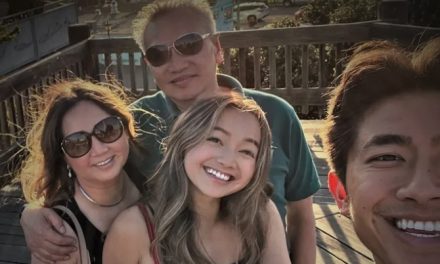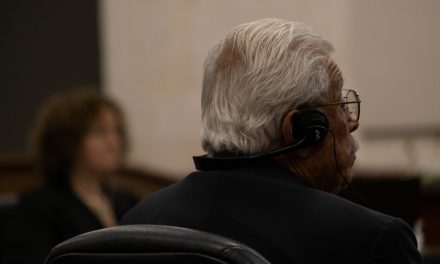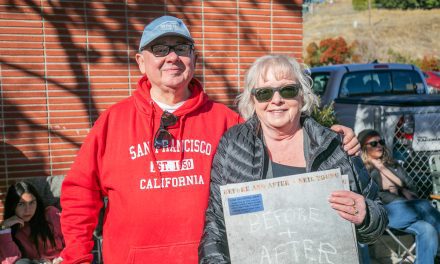By Volunteers of the Atascadero Historical Society
After E.G. Lewis bought Rancho Atascadero from James Harrison Henry (a fact recently uncovered — for a long time we were under the impression that his name was Jason Henry) it began the quest to create a new city out of the wild ranchland that Rancho Atascadero was.
Henry was a man of many interests and business ventures. He had never fully developed the rancho and by all accounts never had more than a few ranch hands. The major use of the rancho from 1904 until 1913 was as an army training ground. During those years Camp Atascadero was home to many different activities by the U.S. Army. There were battlefield training exercises, mapping and surveying efforts as well as several events where folks from San Luis Obispo, Paso Robles and the surrounding area came to watch the the army perform maneuvers. Those activities came to an end in early 1913 after Lewis bought the rancho.
The Atascadero Historical Society is very fortunate to have in its archives a booklet: “Atascadero’s Colony Days,” which was written in 1975 by William H. Lewis, a nephew of E. G. Lewis. William moved to Atascadero in 1915 after his father was chosen to run the Printery for E.G. After living in several other places, William returned to Atascadero and was active in community events. His book is a true, firsthand account of the Colony period of Atascadero from the perspective of someone who was here in
the beginning.
In this edition of Colony Magazine, with its special focus on the 4th of July we will be reprinting two sections of this booklet that recount two very special 4th of July celebrations during the Colony period in Atascadero:
July 4, 1913
“July 4, 1913 was a typical cloudless, warm summer’s day on the Atascadero Rancho. In its century of existence, the rancho had never experienced the activity nor the significance of this particular day. Atascadero’s third owner, the Honorable J. H. Henry, was to transfer the title of the 40-square-mile property to Mrs. E. G. Lewis, representing the Women’s Republic.
Special trains had arrived from San Luis Obispo and from Paso Robles. The mayors of those neighboring cities, as well as the State Senator, were to speak at the ceremony. Three thousand people gathered for the festivities. They arrived by train, automobile, buggy, tallyho, wagon and horseback. These guests were entertained by a concert band and singers, by daylight aerial fireworks, athletic contests, a Spanish barbeque, and the speakers.
The transfer of the deed to the 23,000-acre Rancho Atascadero, from Mr. Henry to Mrs. Lewis, and then to the County Recorder, was signaled by the singing of the “Star Spangled Banner,” raising the flag high above a nearby hill, and by a great aerial bomb. This was the birth of the Atascadero Colony, however, the idea and the concepts for such a colony had preceded this day by several years. E. G. Lewis had been writing about a colony that would provide the residents with the best of both urban and rural life, based upon the use of the automobile. His articles published in his national magazines, based in University City, Missouri, generated enthusiasm for such a project in people in all parts of the nation. This encouraged Mr. Lewis to travel along the Pacific Coast in 1912 in search of a site.
In January of 1913, Lewis announced to his backers and potential residents that he had found a place that was exactly right for the
colony — the Rancho Atascadero. This announcement and a call for funds was made in the Bulletin No. 1 of the Atascadero Colony. Lewis had taken an option for $500 to purchase the million-dollar property.
In this bulletin, Lewis gave his reasons for the selection of the Atascadero: topography, climate and rainfall, location on the main line of the railroad, on the main highway and halfway between the major urban centers of California, and proximity to the coast.
The transfer of ownership on July 4, 1913, to the Women’s Republic, shortly succeeded by the Colony Holding Corporation, did not signal the arrival of any permanent residents. One of the unique concepts of the Colony was that infrastructure development should be completed prior to the construction of the first private residence.
July 4, 1917
“Atascadero, on July 4, 1917, had about 300 homes and 1,500 people and, notwithstanding, Atascadero invited the Governor of California, William D. Stevens, to come and participate in the city’s celebration of Independence Day.
Politically, the Fourth of July is an important day for a Governor — a day to speak of, and be identified with, the virtues of America, usually before as many citizens as possible. Governor Stevens accepted the invitation and came into the civic center on his private train along the spur track that served the Printery. With the Governor was a contingent of the National Guard. A second train arrived loaded with visitors. At 10:30 a.m. the governor was seated on a decorated reviewing stand at the rear of La Plaza along with other important guests.
A parade came first. It was led by the Atascadero Band in uniform and was followed by floats, mounted and marching groups from as far as King City, and by the National Guard men who had arrived with the Governor. After the parade, patriotic songs were sung and Governor Stevens gave his Fourth of July address.
Following an outdoor barbeque, the guests went to Stadium Park. Here they saw a pageant which portrayed scenes from California history.
There were Indians and Franciscan Fathers, Spanish soldiers in metal breastplates and helmets, the pioneers and men of the Bear Flag Republic, and finally, the first raising of the Stars and Stripes over California. Nearly 200 persons were costumed and took part in this pageant.
As evening approached, the guests went out to Atascadero Lake. There the audience, seated on the lawns, watched the Gilbert and Sullivan operetta, H.M.S. Pinafore, performed on a stage shaped like a boat, some feet out in the lake. The presentation included a chorus of 100 in addition to the principals and the orchestra. With a full moon over the lake, this was an evening that the viewers would not forget. At the conclusion of the operetta those who had the endurance and stamina returned to the Pine Mountain Stadium for a dance that lasted beyond this Fourth of July 1917. The number, size and scope of the events of this day would suggest that every
≠person living in the Colony participated in one way or another.
Coincidently, the City of Atascadero incorporated on July 2, 1979.
For many years there were fireworks at the Lake on the 4th of July, but
this year we are celebrating with the 3rd Annual Colony Days 4th of July Bluegrass Freedom Festival.











